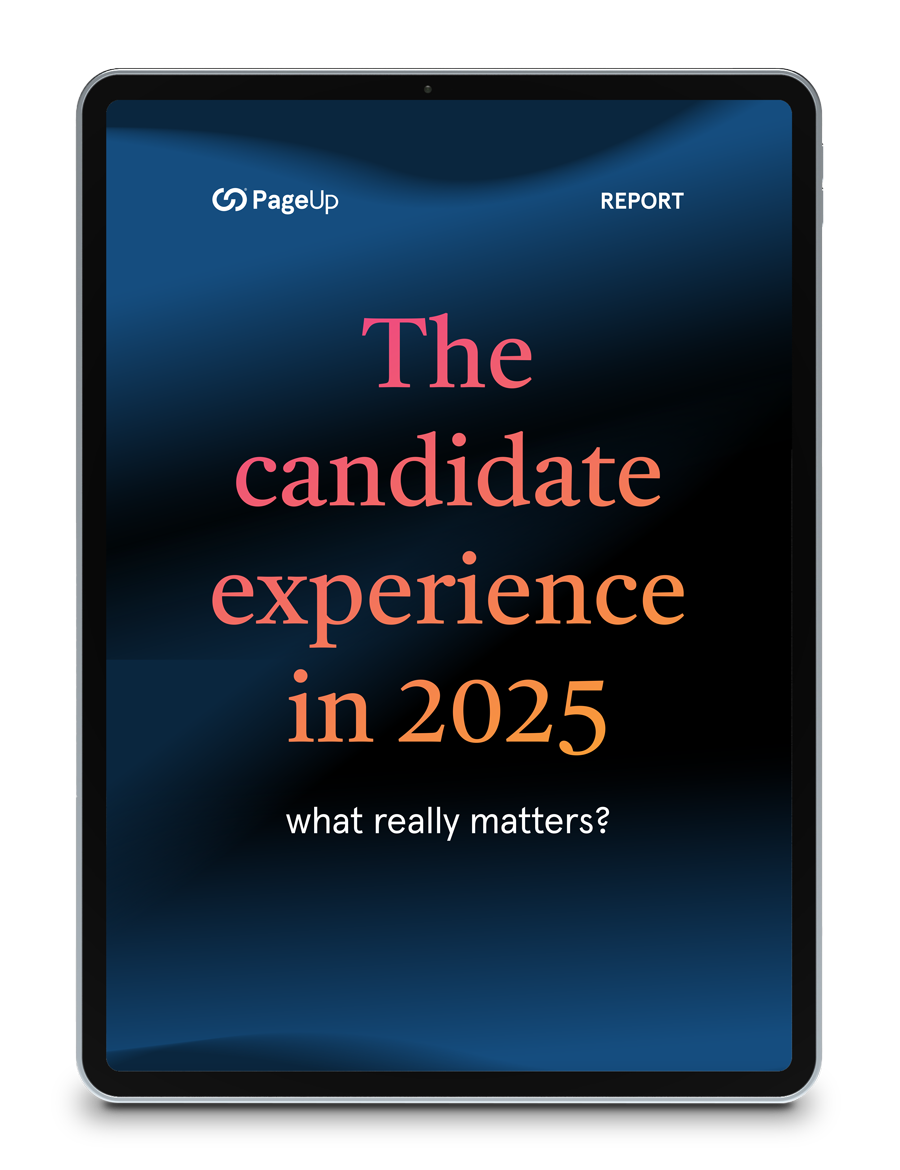While Millenials make up a massive portion of the global workforce, the tides are turning once again. It’s time to shore up our strategies to attract and engage the latest generation entering the world of work: Gen Z.
According to recent data, Millennials and Gen Z comprise 38% of the global workforce – and this figure is set to rise to 58% by 2030, with the latter comprising 30%. But, it’s important to distinguish the key differences between these two powerful cohorts. Gen Z, classified as those born between 1997–2012, is radically different to their older counterparts. In a tumultuous life stage often marked by milestones such as finishing school or university, they have their own unique set of outlooks, challenges, and beliefs about what success means in life and at work.
Let’s set the stage with some quick facts about this demographic. Typically, Gen Z is characterisedcharacterized as having:
- Tech savvy – often turning to the internet to source information, and adept at navigating and using a multitude of platforms.
- Strong convictions – valuing inclusive, supportive communities, political and social activism, and personal expression.
- Pragmatism – possessing both a complicated sense of idealism, tempered with scepticism in facing pervasive global issues, such as reduced economic opportunity, wars and disruptions, and intensifying climate change.
With these key characteristics in mind, let’s explore how to attract and engage this key demographic set to comprise a huge segment of the workforce, particularly as Gen Xers and Baby Boomers continue to retire.
1. A values-driven group
Gen Z are purpose-driven in both life and work. As such, they’re looking for organisationsorganizations with aligned values. Shared values can support their passion for broader social impact, as well as their personal aspirations through key provisions, such as work-life balance and inclusion.
Research shows Gen Z are more racially and ethnically diverse than previous generations. So it’s no surprise they value diversity, equity, inclusion, and belonging (DEIB+). If your organisationorganization has developed a strong DEIB+ strategy and culture, there’s no better way to connect with and attract Gen Z talent than promoting your initiatives. Note: this extends to all types of diversity and inclusion, such as gender, ability, and more. You may like to consider promoting other important organisationalorganizational values, such as climate action and sustainability commitments.
So, how can you communicate these values? A great starting point is authentic recruitment marketing and employer branding. Note: the right recruitment marketing software can be a game-changer for promoting branded, engaging, effective content.
2. PrioritisingPrioritizing authenticity and transparency
Today’s leading organisationsorganizations understand that when it comes to talent attraction, vagueness and lack of information doesn’t cut the mustard – particularly for a generation that has access to, and the capacity to absorb an endless stream of information. Whether they’re researching the best product deals, or the best job opportunities, Gen Z do their homework.
The fact is, your employer brand exists, whether you have a careers site, are active on social media or not. (Simply consider your reputation on major platforms such as Glassdoor or LinkedIn.) It’s up to your organisationorganization to shape and develop it.
Facilitate transparency, strengthen your employer brand, and authentically showcase what it’s like being part of your workplace through avenues such as your:
- Careers site – to share new jobs, your Employee Value Proposition (EVP), company values, DEI initiatives, and opportunities for prospective candidates to join your talent community. Pro tip: ensure your careers site is mobile-optimisedoptimised and user-friendly, and you may even like to personalisepersonalize the experience for Gen Zs with a targeted microsite.
- Employee-generated content – a great way to populate your careers site, engaging employee-generated content may include photos, videos, employee quotes, testimonials and career stories.
- Social media – to drive traffic to your careers site content, and share targeted messaging that speaks directly to this demographic, in addition to company news.
- Recruitment process information – to establish realistic expectations about your roles and hiring process.
- Talent community news – if you’ve established job alerts or talent community opt-in CTAs, consider automated workflows to share content with your talent community. AI and automation technology can work in your favour here, helping you achieve better strategic recruitment outcomes.
It all contributes to supporting Gen Zs to find what they need to make informed decisions about cultural and professional fit, inspire them to take action, as well as developing your talent pipelines and overall employer brand. Be sure to unlock the value of passive candidates interested in your organisationorganization by conducting regular talent pool analyses and improvements to measure ROI.
Effective recruitment marketing software makes building a powerful careers site that converts simple. Share employee-generated content and drive traffic to your site with minimal effort and maximum results. You may even like to explore software that connects potential candidates with employees via an AI-powered Q&A discussion platform.
3. Showcasing digital capabilities
Perhaps it’s no secret digital devices, online connectivity, and social media are mainstays in Gen Z’s lives. Their social lives, downtime, learning, interactions, and relationships are fundamentally interwoven with online and social media. 54% of Gen Zs spend at least four hours a day on social media, and 73% of job seekers (aged 18-34) find roles through social media channels like LinkedIn.
The numbers paint a clear picture: talent acquisition teams must execute a well-designed social media strategy to reach this audience. An added benefit? It can increase your capacity to reach passive job seekers too. Select your key platforms strategically, use consistent messaging, and post regularly. There’s no better way to engage Gen Z talent than by celebrating your team members, company achievements, initiatives, and culture.
Additionally, you may like to enhance your mobile recruitment marketing efforts. Whether you’re sharing new opportunities or supporting candidates through the hiring process, mobile messaging enables you to connect with candidates more directly on their platform of choice. It’s Gen-Z-friendly, interactive, efficient, and convenient – particularly for scheduling interviews and other important touchpoints – and can reduce time-to-hire.
And if there’s one sure way to lose Gen Z applicants, or prevent them from applying at all, it’s a clunky, out-of-date recruitment process. So most importantly, ensure your recruitment software ensures a smooth candidate experience from start to finish, and measure its effectiveness. This includes everything from your applicant portal, scheduling and video interviewing functions, to screening and assessment, offers, and beyond.
There are many ways to showcase your digital capabilities to attract Gen Z – don’t forget about backend work too. Ensure you’re taking the right steps by measuring results through data and analytics. Track key recruitment metrics, such as careers site traffic, conversion rates, offer acceptance rates, and other data points to measure the effectiveness of your campaigns. Analyse and share data to refine your processes and increase ROI. Meaningful analytics lead to better recruiting practices. Data-driven insights empower you to stay agile, make informed decisions, and ensure you’re consistently meeting the evolving expectations of Gen Z candidates.
4. Facilitating financial transparency
According to recent reports, Gen Z values salary less than every other generation. If given the choice of accepting a better-paying but boring job, versus work that was more interesting but didn’t pay as well, Gen Z was fairly evenly split over the choice. But here’s the caveat: salary is still the most important factor for Gen Z deciding on a job.
This makes sense. Considering rising inflation, cost-of-living pressures, and a housing market increasingly out of reach, we can’t ignore the elephant in the room: Gen Z is economically disadvantaged, indebted, and suffering financial stress.
Salary is still the most important factor for Gen Z deciding on a job.
To combat this, pay transparency and sharing salary ranges up front will put organisationsorganizations in good stead. In fact, 85% of recent and upcoming grads state they’re less likely to apply for a job if a company doesn’t disclose a salary range in job postings. Higher job security, economic resilience, and better growth opportunities are also cited as important factors. It could make sense to conduct a comparative analysis of job listings, to assess ROI using data and analytics.
5. Clear career growth pathways
In a similar vein, Gen Zs prioritiseprioritize career progression opportunities in their job search – and a lack of them might be a dealbreaker. Career planning and pathways extend beyond traditional hierarchical structures. It encompasses:
- training and development programs
- mentorship and coaching
- continuous learning initiatives, such as ‘stretch’ projects
- lateral moves and internal progression
- networking opportunities and events.
Well-designed graduate programs are another powerful way to engage this demographic, ease their transition into the workforce, and give them a balanced, comprehensive introduction to your organisationorganization, departments, culture and team. For organisationsorganizations that can offer these programs, partner with local universities, attend career fairs, and join speaking events to start building connections.
Promoting a range of career growth opportunities will play a pivotal role in empowering young team members to thrive in their careers, explore areas of interest, align their individual potential with organisationalorganizational goals, as well as improve innovation, creativity and retention. Be sure to make them shine through your employer brand.
6. PrioritisingPrioritizing wellness, mental health support, and flexibility
Gen Z report the least positive outlook and the highest prevalence of mental illness of any generation. And it’s no wonder. Their development has been impacted by growing global unrest and wars, financial crises, educational interruptions due to the pandemic, and climate anxiety, among a range of other difficulties.
Here’s how promoting work-life balance, flexibility, and mental health support can make the biggest difference.
In promoting work-life balance, encourage them to take breaks, make time for personal pursuits, and respect time outside business hours. Adopting flexible models can enable organisationsorganizations to be more responsive to employees’ needs, whether it’s with respect to flexible hours, patterns, or locations of work. By establishing the right KPIs, tools, and support, it can also develop greater trust.
PrioritisePrioritize mental health resources, such as training, workshops, webinars, resources, tools, or other initiatives that support employee wellbeing. Offer mental health training for front-line leaders to ensure they’re equipped to offer support and facilitate an inclusive, stigma-free workplace. Individually, Gen Z’s behaviour can often be influenced by their leaders, teams, and work culture.
As Gen Z gives particular weight to mental health resources, making them available and visible may help alleviate stress to make them happier, more engaged, and productive. Not only is this the right thing to do, it also makes good business sense. Being adaptable and empathetic creates a strong work environment for all team members to thrive.
At the end of the day, your organisationorganization’s ability to attract and retain Gen Z hinges on appreciating their strengths and gifts, while understanding their vulnerabilities and struggles. There’s a wealth of opportunity to gain from this emerging, switched-on, and technologically-skilled group. Be sure to continue adapting and tailoring your approach using recruitment metrics to achieve the best outcomes. Consider these recommendations to not only engage this demographic, but to create an inclusive, supportive, multi-generational workplace, where all team members can succeed.
Ready to optimiseoptimize your Gen Z talent acquisition strategy with a purpose-built recruitment platform, strengthened by data and analytics? Get in touch to transform the way you hire with PageUp.
Fresh insights for HR
Stay up to date with HR trends, tips and more when you sign up for our industry newsletter





